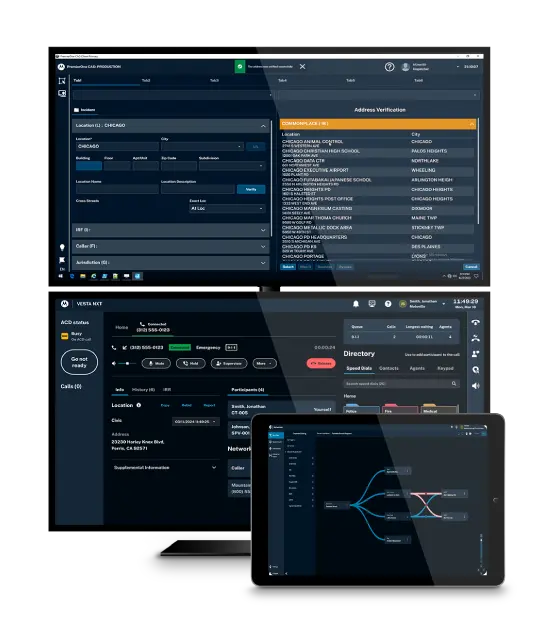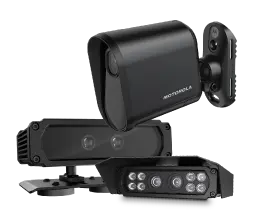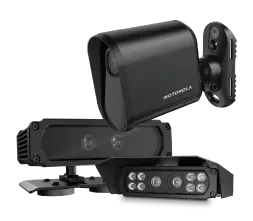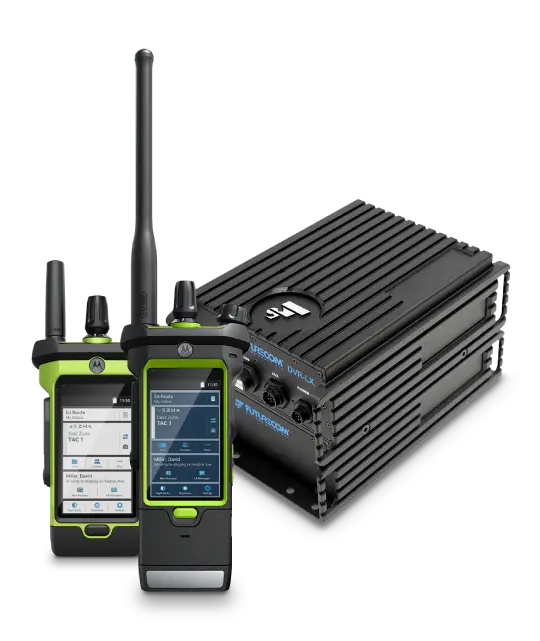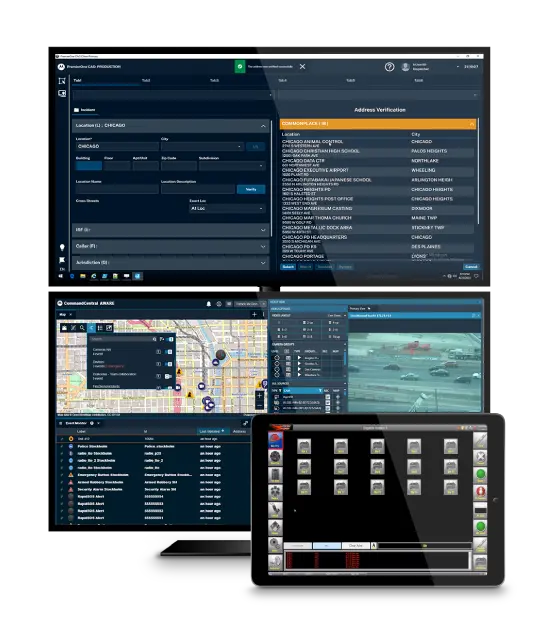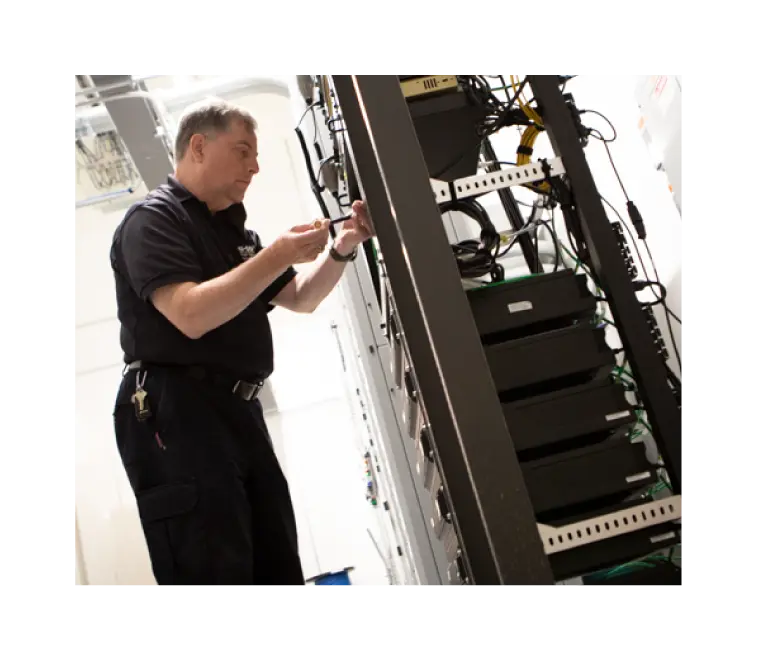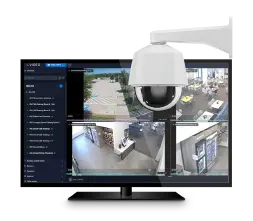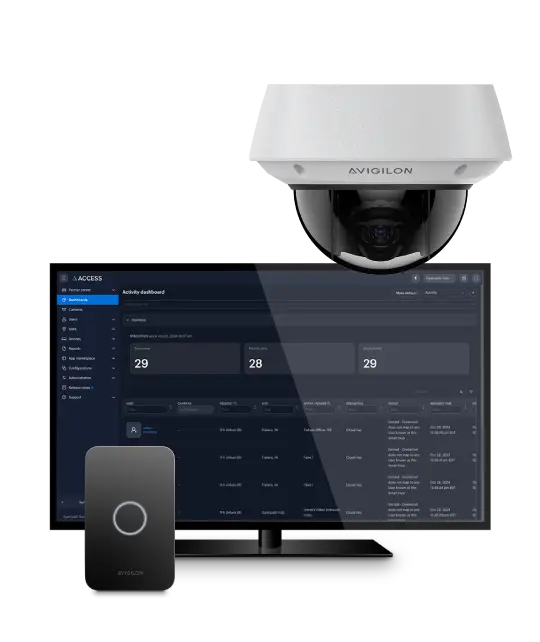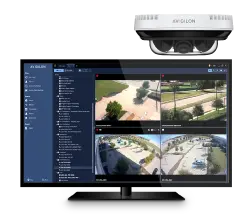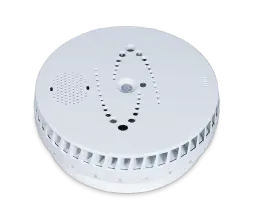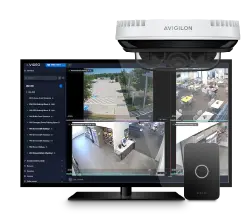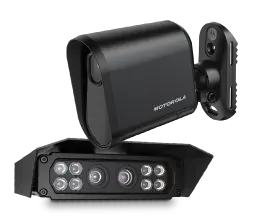Motorola Solutions announces strategic alliance with BRINC and SkySafe Read more
Motorola Solutions invests in BRINC, SkySafe
Integrating Drone as First Responder and drone detection technologies into its 911 command center solution
Safer hospitals from admission to discharge
From the moment a patient walks in until after discharge, delivering quality care starts with safety.
Solving for safer
At Motorola Solutions, we build and connect technologies that help make the places where we live and work safer.
Motorola Solutions FedRAMP High Authorization
Authorization allows agencies to more quickly procure select Motorola Solutions cloud software, APX-series radios and radio applications.
- BRINC & SkySafe
- Invist
- Safer hospitals
- Solving for safer
- FedRamp
Please wait...
Customize your experience
Solving for safer
We build and connect technologies to help protect people, property and places, enabling the collaboration between public safety agencies and enterprises that’s critical to safety and security.
Technologies designed to work together to help strengthen safety, everywhere.
Learn moreA shared vision of safety and security
Explore how customers depend on our connected ecosystem to create better outcomes for the people and places they serve.
See safer stories
Glendale Police: Next generation communications
See how APX NEXT P25 smart radios bring next level connectivity and functionality to Glendale.

Greater Dayton School: Connecting innovative solutions
Greater Dayton School is setting the standard safer schools through their use of cutting-edge technology and innovative solutions.

Logan Aluminum: Driving the future of plant safety
Located in southwestern Kentucky, Logan Aluminum is forging a modern approach to safety, security and efficiency with an integrated technology ecosystem.

York Regional Police: Investing in cybersecurity
Learn how York Regional Police prioritized the protection of data by partnering with Motorola Solutions for cybersecurity services.

South Holland Fire Dept: Personnel accountability system
Hear how South Holland Fire Department can receive information and issue orders using APX radios.

Perry Township: Safety supports student success
Perry Township dramatically boosts school safety with an integrated technology suite to provide real time detection, faster intelligence and strengthen communication.

State of utah reduces 9-1-1 call transfers
See how the State of Utah successfully reduced call transfers by 50% with a new location-based routing solution.

Hurricane Ian: Sumter's P25 cloud holds
Hear how Sumter County, Florida maintained emergency communication after a hurricane takes down a critical part of their P25 radio network.
Please wait...








Technology that’s exponentially more powerful, together.
We make devices and networks that perform exceptionally in the harshest conditions, so you can stay connected and communicate clearly.
Explore all radiosWe unify voice, video and data feeds into the command center, providing perspective to help make decisions with focus, accuracy and speed.
Explore all softwareWe design video security and access control solutions that lets you keep your people and property safe – no matter the industry, requirements or complexity.
Explore all video securityWe provide managed, support and professional services to keep your solutions secure, optimized and current.
Explore all services





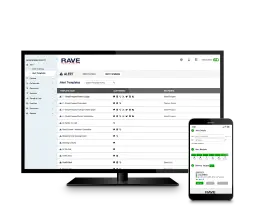
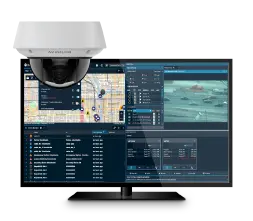
See what safer can do for your industry.



Safer communities
Our ecosystem helps protect people, property and places and enables collaboration between public safety agencies, enterprises and communities that’s critical to safety and security.
Technologies designed to work together to help strengthen safety, everywhere.
Learn moreA shared vision of safety and security
Explore how agencies depend on the Motorola Solutions public safety technology ecosystem to create better outcomes for the communities they serve.
See safer stories
Glendale Police: Next generation communications
See how APX NEXT P25 smart radios bring next level connectivity and functionality to Glendale.

York Regional Police: Investing in cybersecurity
Learn how York Regional Police prioritized the protection of data by partnering with Motorola Solutions for cybersecurity services.

A new CAD solution for Peel Regional Police Dept
Watch how Peel Regional Police implemented the PremierOne CAD solution for their dispatch center.

State of utah reduces 9-1-1 call transfers
See how the State of Utah successfully reduced call transfers by 50% with a new location-based routing solution.

Snohomish county protects what matters most
Learn how Snohomish County utilizes mass notification technology to keep students and staff safe across county campuses.

Streamlining daily workflows with South Charleston PD
See how Motorola Solutions body-worn and in-car camera systems help South Charleston PD with capturing evidence and streamline daily workflow

Hammond Indiana's license plate recognition program
See how the Hammond Indiana Police Department uses license plate recognition technology to lower crime and enhance community safety.

Fostering trust in Hobart, OK with the VB400 body camera
Discover how Hobart Police Department uses the easy-to-operate, rugged VB400 body camera to improve transparency in their rural community.
Please wait...










Technology that’s exponentially more powerful, together.
No matter the situation, the APX P25 radio portfolio was built to streamline mission-critical communications, so you can get the job done.
Explore all radiosFrom call to case closure, keep your command center running at peak efficiency with the industry's only complete, 360° incident view.
Explore all softwareFaster investigations and responses require proactive detection. Make intelligent mobile video and fixed video security your advantage.
Explore all video securityEnsure reliable communication, enhance situational awareness and improve response times with Managed & Support Services.
Explore all services
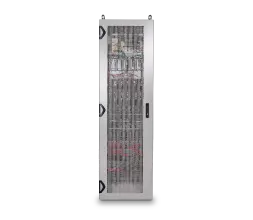


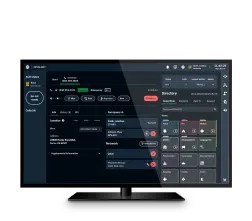



What can safer do? Connect those in need with those who can help.



Safer firegrounds
Our safety and security ecosystem helps protect people, property and places, enabling collaboration that’s critical to safety and security – from routine call to the most critical mission.
Technologies designed to work together to help strengthen safety, everywhere.
Learn moreA shared vision of safety and security
When unforeseen challenges present themselves, discover why fire departments and emergency response teams depend on our safety and security ecosystem.
See safer stories
So. Holland Fire Department: Personnel accountability system
Hear how South Holland Fire Department can receive information and issue orders using APX radios.

Sumter County: P25 communication in the cloud
Hear how Sumter County tested cloud technology from Motorola Solutions to cost effectively add redundancy on their ASTRO P25 radio system.

Developing a firefighter radio built to NFPA 1802 standards
The APX NEXT XN smart radio is designed to the tough standards of NFPA 1802. Listen to our experts describe the significance of meeting this standard.

The thin red line DuPage County Fire
See how direct communication from radio integration has benefited DuPage County Fire .

Fremont FD: Utilizing APX radios during a natural disaster
See how Motorola Solutions Mission Critical Communications can help make an impact in your community.

Hurricane Ian: Sumter's P25 cloud holds
Hear how Sumter County, Florida maintained emergency communication after a hurricane takes down a critical part of their P25 radio network.
Please wait...








Technology that’s exponentially more powerful, together.
Your job is mission critical. APX radios are designed to reliably optimize your communications, specifically in extreme environments.
Explore all radiosSecure and innovative public safety software solutions so you can respond with confidence from call to case closure.
Explore all softwareVideo technology is quickly becoming a more useful asset within the fire and EMS service. See how video can help your department today.
Explore all video securityMaximize uptime, enhance communication and improve coordination with Managed & Support Services from Motorola Solutions.
Explore all services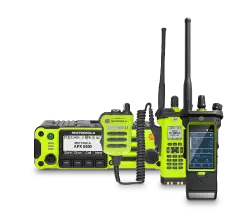

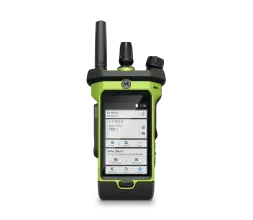
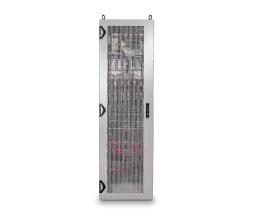
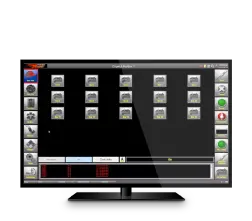



What can safer do? Help bridge the gap between crisis and care.



Safer schools
Our safety and security ecosystem brings together critical solutions to help nurture the next generation of thinkers. Because the only thing students should focus on is their next exam.
Technologies designed to work together to help strengthen safety, everywhere.
Learn moreA shared vision of safety and security
From reading to recess, discover how administrators and school security are using and connecting the technology ecosystem to create safer schools.
See safer stories
Greater Dayton School: Connecting innovative solutions
Greater Dayton School is setting the standard safer schools through their use of cutting-edge technology and innovative solutions.

Saranac Community Schools: Integrating communication systems
A small school district significantly enhanced safety and communication with Motorola Solutions' safety and security ecosystem.

Royse City ISD: Future-proof security at fast-growing school
Royse City unifies technology solutions to save time, improve situational awareness and deliver greater safety.

Perry Township: Safety supports student success
Perry Township dramatically boosts school safety with an integrated technology suite to provide real time detection, faster intelligence and strengthen communication.

Northwest ISD: Automating systems for enhanced safety
NISD effectively monitors their entire school district of 31 campuses by automating and integrating security systems under one ecosystem.
Please wait...










Technology that’s exponentially more powerful, together.
Enhance school safety through better communications with systems, devices and applications that keep your staff seamlessly connected.
Explore all radiosPurpose-built to enable emergency and operational notifications, critical data sharing and response coordination.
Explore all softwareCreate safer schools with campus security technology built to enable faster responses and increase situational awareness.
Explore all video securityKeep the focus on learning with help from secure communication, streamlined IT and enhanced safety solutions.
Explore all services







What can safer do? Graduate a class.



Safer manufacturing
Our safety and security ecosystem helps connect machines, people and data. From the production line to the bottom line, safer manufacturing helps drive the shift to “smart” manufacturing.
Technologies designed to work together to help strengthen safety, everywhere.
Learn moreA shared vision of safety and security
When everything is on the line, discover how the safety and security ecosystem improves critical communications and enhances operational efficiencies.
See safer stories
Logan Aluminum: Driving the future of plant safety
Located in southwestern Kentucky, Logan Aluminum is forging a modern approach to safety, security and efficiency with an integrated technology ecosystem.

Jindal Stainless Ltd: Building safer & productive operations
Wave PTX is increasing connectivity at the plant for seamless connectivity resulting in safer and more productive operations.
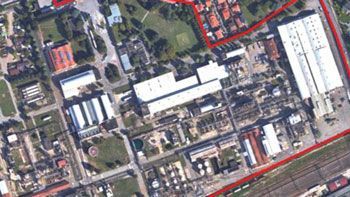
Trinseo: MOTOTRBO integrated emergency incident coordination
Global materials solution provider with stringent safety norms and telecom standards uses MOTOTRBO system to deliver clear communications to safety teams & plant staff.

Blue Bird: Driving workplace safety
Delivering critical communications and targeted messaging to a seasonal staff utilizing the Rave platform.

Safe manufacturing solutions brief
Discover how our safety & security ecosystem can address needs within your manufacturing plants.
Please wait...








Technology that’s exponentially more powerful, together.
Connect your entire team with reliable communication designed to support safe and efficient manufacturing.
Explore all radiosPurpose-built to enable emergency and operational notifications, critical data sharing, response coordination and automated workflows.
Explore all softwareStreamline operations and keep workers safer with manufacturing live video monitoring, access control and plant security systems.
Explore all video securityKeep your production lines running smoothly and your workers safe with Managed & Support Services from Motorola Solutions.
Explore all services

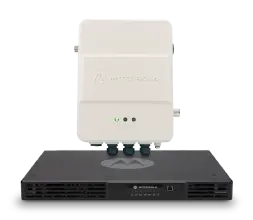



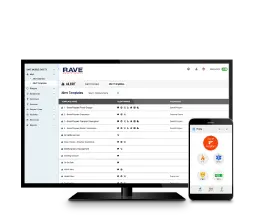

What can safer do? Drive productivity and the bottom line.



Safer retail
Our safety and security ecosystem drives the competitive edge, keeping employees safe while delivering on customer experiences by detecting theft, securing facilities and keeping teams connected.
Technologies designed to work together to help strengthen safety, everywhere.
Learn moreA shared vision of safety and security
Check out the safety and security technology that connects to keep employees safer, operations more efficient, and customers happier.
See safer stories
ASDA: Body cameras for retail security
Improving safety of staff and shoppers while also providing store security with indisputable video evidence, when needed.

The Co-op: Wearable cameras for staff and public protection
Leading convenience retailer utilizes VT100 body cameras within an integrated, connected ecurity solution to allow employees to feel safer in their roles.

Hakata Daimaru: Boosting response with Wave PTX
Japanese retailer is boosting emergency disaster responses with Wave PTX push-to-talk service and TLK 100 devices.

Next-generation push-to-talk communication
TLK 100 devices and Wave PTX combine the broad coverage of a nationwide cellular network with the ease of two-way radio communications.

2024 Retail worker safety survey
Survey gauges retail workers’ perspectives about safety and workplace security measures, showing that security technologies help people feel safer at work.
Please wait...








Technology that’s exponentially more powerful, together.
Connect your associates through realiable and long range communication devices and apps.
Explore all radiosConnect your store's radios to video solutions and stay up to date with panic button mandates.
Explore all softwareCreate a safer shopping environment while preventing theft with comprehensive retail security systems.
Explore all video securitySecure your store, enhance customer experiences and optimize operations with Managed & Support Services from Motorola Solutions.
Explore all services







What can safer do? Bring front line workers peace of mind.



Featured news






